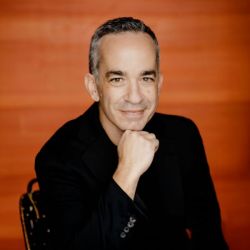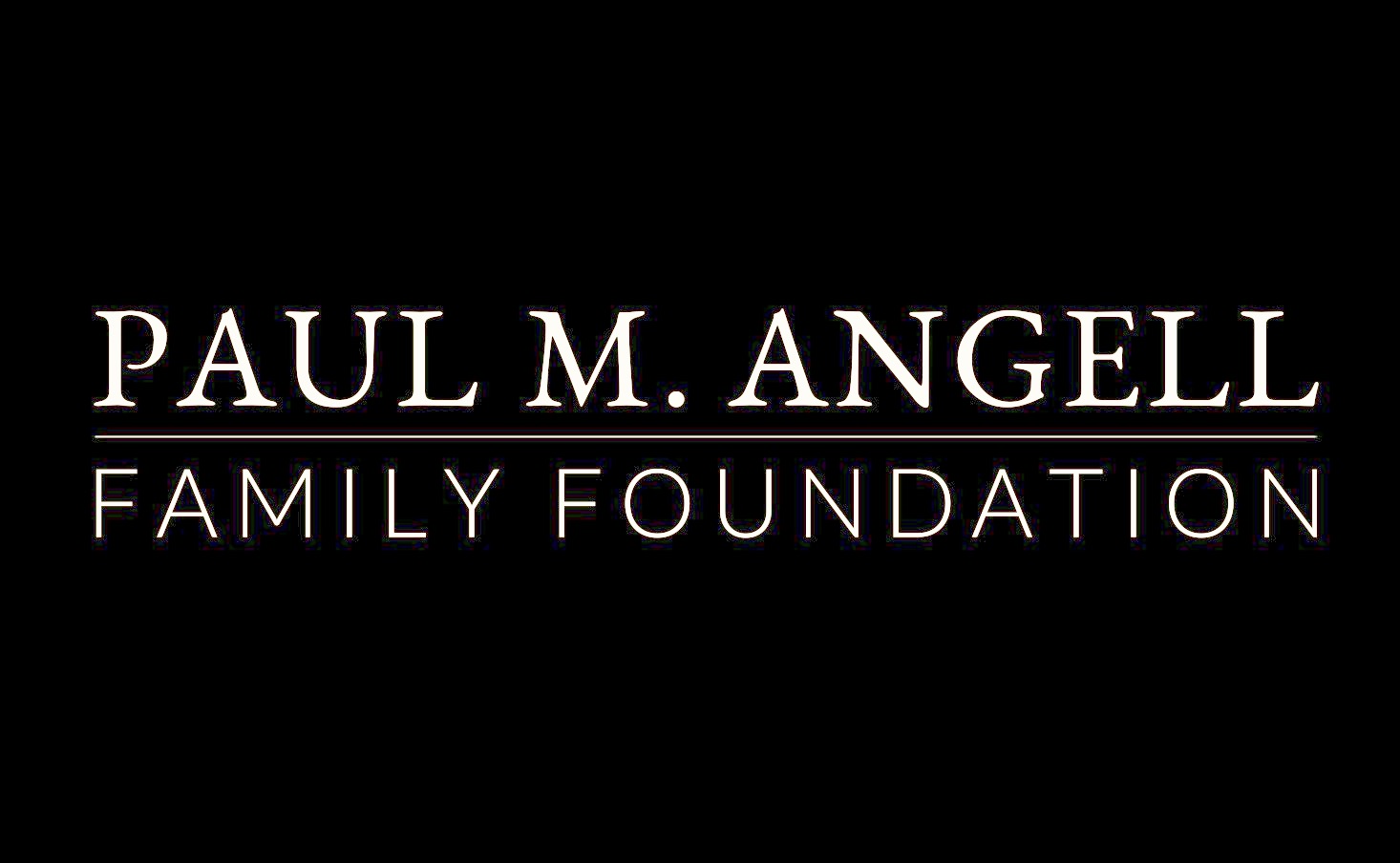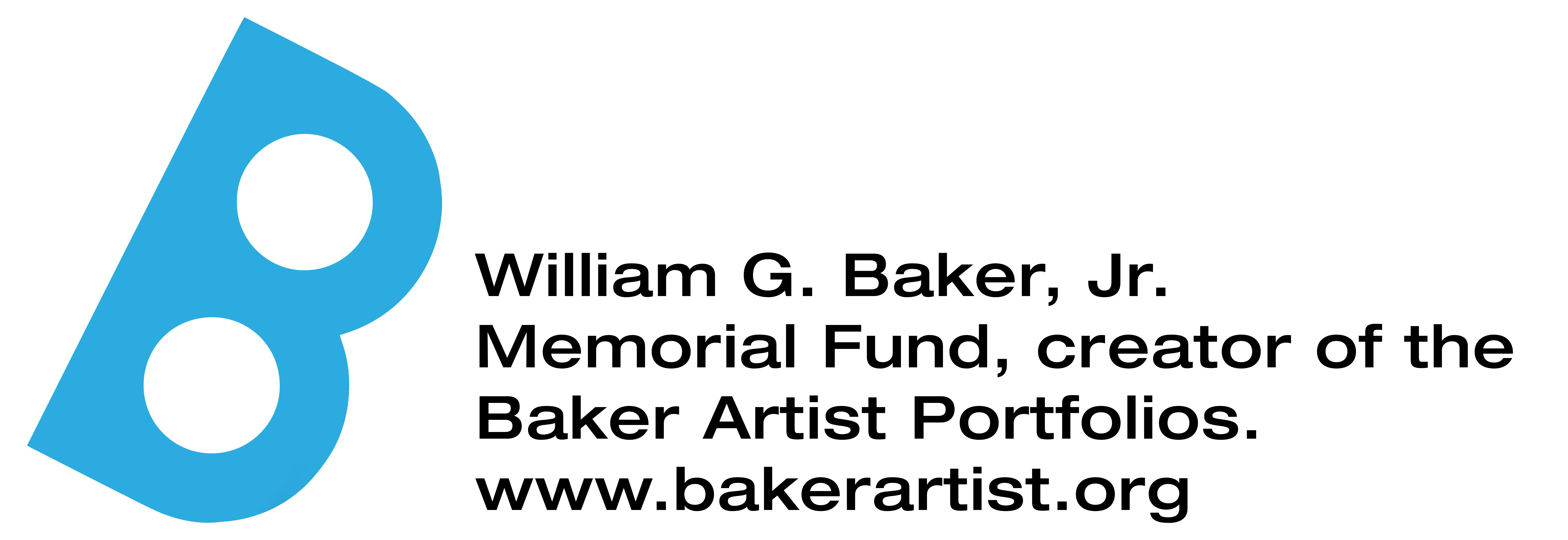Dover Quartet
Inon Barnatan, piano
The Mity Clark Gann Concert | The David & Barbara Kornblatt Commissioning Fund
Location: Shriver Hall
The Grammy-nominated Dover Quartet returns to Shriver Hall, joined by star pianist Inon Barnatan, who brings his “uncommon sensitivity” (The New Yorker) and "impeccable musicality and phrasing" (Le Figaro) to this intimate setting. Together they present one of the pinnacles of the chamber music repertoire: Dvořák’s colorful, folk-inflected quintet. Expansive sounds from American composers open the program.
The Dover Quartet is "excellent and fast-rising." —New York Times
Barnatan is "one of the most admired pianists of his generation." —New York Times
What You'll Hear
Michelle Cann was originally scheduled to perform with the Dover Quartet and needed to withdraw due to a scheduling conflict. We are very grateful to Inon Barnatan for graciously stepping in.
About the sponsor
Florence Clarke Gann (1909-1995) was known as “Mity” because she was as small as a “mite.” The moniker never fit. She had irrepressible energy and an extraordinary love for life. She had a quest for knowledge and enjoyed lively intellectual debate. She loved music, art, good books, and, at age 85, she was still working on her tennis game. Mity’s love for music and her piano were important aspects of her life. She played chamber music and was still playing a few weeks before her death. She used to say, “Music is one of the things that always makes me feel good.” Mity’s legacy is surely one of love for life and for all the beautiful and interesting things in it. She is remembered by this gift of a concert in her memory made in 1996 by her family and friends.
Barbara and the late David Kornblatt always had a passion for contemporary art and the creative process. From 1975 to 1992, Barbara owned an art gallery that specialized in contemporary American painting, sculpture and works on paper, and she helped numerous artists create and sustain lasting careers. Over 50 years ago, David and a partner founded what would become the Kornblatt Company—a real estate development, brokerage, and management firm culminating in the building and management of Saint Paul Plaza. Passionate concertgoers, Barbara joined SHCS’s Board of Directors in 1998. Her and David's generous contribution establishing this fund in 2014 enabling SHCS to regularly commission and premiere new works. This gift was made in honor of their parents Harry & Rebecca Kornblatt and Isidore & Sarah Rodbell.

Dover Quartet
Joel Link, violin
Bryan Lee, violin
Julianne Lee, viola
Camden Shaw, cello
Named one of the greatest string quartets of the last 100 years by BBC Music Magazine and “the next Guarneri Quartet” by the Chicago Tribune, the two-time Grammy-nominated Dover Quartet is one of the world’s most in-demand chamber ensembles. The group’s awards include a stunning sweep of all prizes at the 2013 Banff International String Quartet Competition, grand and first prizes at the Fischoff Chamber Music Competition, and prizes at the Wigmore Hall International String Quartet Competition. Its honors include the prestigious Avery Fisher Career Grant, Chamber Music America’s Cleveland Quartet Award, and Lincoln Center’s Hunt Family Award. The Dover Quartet is the Penelope P. Watkins Ensemble in Residence at the Curtis Institute of Music and Quartet in Residence at Northwestern University’s Bienen School of Music.
The Dover Quartet’s 2024-25 season includes premiere performances throughout North America of newly commissioned works by Jerod Impichchaachaaha' Tate; collaborative performances with pianists Michelle Cann, Marc-Andre Hamelin, and Haochen Zhang; and tours to Europe and Asia. Recent collaborators include Leif Ove Andsnes, Emanuel Ax, Inon Barnaton, Ray Chen, Anthony McGill, Edgar Meyer, the Pavel Haas Quartet, Roomful of Teeth, and Davone Tines. The quartet has also recently premiered works by Mason Bates, Steven Mackey, Marc Neikrug, and Chris Rogerson.
The Dover Quartet’s highly acclaimed three-volume recording, “Beethoven Complete String Quartets” (Cedille Records), was hailed as “meticulously balanced, technically clean-as-a-whistle, and intonationally immaculate” (The Strad). The quartet’s discography also includes “Encores” (Brooklyn Classical), a recording of 10 popular movements from the string quartet repertoire; “The Schumann Quartets” (Azica Records), which was nominated for a Grammy; “Voices of Defiance: 1943, 1944, 1945” (Cedille Records); and an all-Wolfgang Amadeus Mozart debut recording (Cedille Records), featuring Michael Tree, the late, long-time violist of the Guarneri Quartet. The quartet’s recording of Steven Mackey’s theatrical-musical work Memoir, recorded with the percussion group arx duo and narrator Natalie Christa Rakes, was released on Bridge Records in August 2024. A recording of the Tate commissions and Antonin Dvořak’s String Quartet in F major, Op. 96 (“American”) will be released in 2025 on Curtis Studio, the record label of the Curtis Institute of Music.
The Dover Quartet draws from the lineage of the distinguished Guarneri, Cleveland, and Vermeer quartets. Its members studied at the Curtis Institute of Music, Rice University’s Shepherd School of Music, the New England Conservatory, and the Conservatoire Superieur de Musique et de Danse de Paris. They were mentored extensively by Shmuel Ashkenasi, James Dunham, Norman Fischer, Kenneth Goldsmith, Joseph Silverstein, Arnold Steinhardt, Michael Tree, and Peter Wiley. The Dover Quartet was formed at Curtis in 2008; its name pays tribute to Dover Beach by fellow Curtis alumnus Samuel Barber.
The Dover Quartet plays on the following instruments and proudly endorses Thomastik-Infeld strings:
- Joel Link: a very fine Peter Guarneri of Mantua, 1710-15, on generous loan from Irene R. Miller through the Beare’s International Violin Society
- Bryan Lee: Nicolas Lupot, Paris, 1810;
Samuel Zygmuntowicz, Brooklyn, 2020 - Julianne Lee: Robert Brode, 2005
- Camden Shaw: Joseph Hill, London, 1770
The ensemble’s website is doverquartet.com, and it can be found on Instagram at @doverquartet
"Expert musicianship, razor-sharp ensemble, deep musical feeling and a palpable commitment to communication." -Chicago Tribune

Inon Barnatan
“One of the most admired pianists of his generation” (New York Times), Inon Barnatan has received universal acclaim for his “uncommon sensitivity” (The New Yorker), “impeccable musicality and phrasing” (Le Figaro), and his stature as “a true poet of the keyboard: refined, searching, unfailingly communicative” (The Evening Standard). A multifaceted musician, Barnatan is equally celebrated as soloist, curator, and collaborator.
As a soloist, Barnatan is a regular performer with many of the world’s foremost orchestras and conductors. He was the inaugural Artist-in-Association of the New York Philharmonic from 2014-17 and has played with the BBC Symphony for the BBC Proms, the Los Angeles Philharmonic at the Hollywood Bowl, the symphony orchestras of Chicago, Cleveland, Boston and most major orchestras in the US, as well as the Leipzig Gewandhaus Orchestra, Tokyo Metropolitan Orchestra Symphony, and the London, Helsinki, Hong Kong, and Royal Stockholm philharmonics.
Barnatan's 2024-25 season highlights include performances with major orchestras worldwide. He opens the season with a gala performance at the San Diego Symphony, and performs with the New Jersey Symphony, Pasadena Symphony, Boston Symphony, Tokyo Symphony, Naples Philharmonic, Israel Symphony, and Atlanta Symphony. Additionally, he continues his collaboration with cellist Alisa Weilerstein with performances at Stanford Live and Celebrity Series of Boston, and performs alongside James Ehnes at London’s Wigmore Hall. Barnatan and Weilerstein’s highly anticipated album of Brahms' Cello Sonatas was released by Pentatone in November 2024.
Equally at home as a curator and chamber musician, Barnatan is Music Director of La Jolla Music Society Summerfest in California, one of leading music festivals in the country. He regularly collaborates with world-class partners such as Renée Fleming and Alisa Weilerstein, and plays at major chamber music festivals including, Seattle, Santa Fe, and Spoleto USA. Barnatan was a member of the Chamber Music Society of Lincoln Center’s Bowers Program (formerly CMS Two) from 2006 to 2009 and continues to perform with CMS in New York and on tour.
Born in Tel Aviv in 1979, Inon Barnatan started playing the piano at the age of three, when his parents discovered his perfect pitch, and made his orchestral debut at eleven. His musical education connects him to some of the 20th century’s most illustrious pianists and teachers: he studied first with Professor Victor Derevianko, a student of the Russian master Heinrich Neuhaus, before moving to London in 1997 to study at the Royal Academy of Music with Christopher Elton and Maria Curcio, a student of the legendary Artur Schnabel. The late Leon Fleisher was also an influential teacher and mentor.
Inon Barnatan’s website is www.inonbarnatan.com.
"[Barnatan is] a true poet of the keyboard: refined, searching, unfailingly communicative." —The Evening Standard
Jessie Montgomery (b. 1981)
Strum
View NotesGrammy-winning composer-violinist Jessie Montgomery characterizes herself as a “hunter-gatherer”: her music combines elements of the European concert-hall tradition with African American and other vernacular influences, including folk idioms, spirituals, and blues, that have expanded and enriched the vocabulary of contemporary American classical music. A member of the multicultural Silk Road Ensemble, she sees music as “a meeting place at which all people can converse about their unique differences and common stories.” Montgomery has long been affiliated with the Sphinx Organization, a pioneer in the movement to promote diversity in the arts by advocating for Black and Latino classical musicians. Her ongoing musical exploration of the African American experience is reflected in such works as Five Slave Songs, a nonet inspired by the Great Migration, and a “re-envisioning” of Scott Joplin’s opera Treemonisha, scored for an ensemble of African and Western instruments.
Montgomery’s compositions range from somber meditations to joyful, Ivesian jamborees. Strum, a short piece bursting with folksy lyricism and kinetic energy, falls into the latter category. Written in 2006 and revised six years later for the 15th annual Sphinx Competition, it was originally conceived for an ensemble of two violins, viola, and two cellos. Montgomery explains that “the voicing is often spread wide over the ensemble, giving the music an expansive quality of sound. Within Strum utilized texture motives, layers of rhythmic or harmonic ostinato that string together to form a bed of sound for melodies to weave in and out. The strumming pizzicato serves as a texture motive and the primary driving rhythmic underpinning of the piece. Drawing on American folk idioms and the spirit of dance and movement, the piece has a kind of narrative that begins with fleeting nostalgia and transforms into ecstatic celebration.”
© Harry Haskell, 2024
Pura Fé Crescioni (Tuscarora) (b. 1959)
Rattle Songs (orch. Tate)
View NotesPura Fé Crescioni, whose name means “Pure Faith,” was born in New York City. She was raised by her mother, a classically trained opera singer who ensured that her daughter received professional-caliber instruction in both music and dance. While training at the American Ballet Theatre, Pura Fé got an early start in show business by doing studio work, singing television commercials and jingles, and performing in Broadway musicals and road shows. Pura Fé’s career took off in 1995, when the writer and musician James McBride produced her first solo album for a major record label. Two years later she moved to North Carolina to reconnect with her maternal heritage in the historic homeland of the Tuscarora Nation. (She now lives in northern Saskatchewan, Canada.) Her Indigenous, African American, Scotch-Irish, Corsican, and Caribbean heritage is mirrored in the diversity of her musical influences, which range from traditional Native American idioms to blues, jazz, and various strains of roots music.
Rattle Songs was featured on the1996 debut album of Ulali, the Indigenous women’s a cappella vocal trio that Pura Fé founded in 1987. The bewitching spell cast by the songs’ gently pulsating rhythms, incantatory melodies, and close harmonies is enhanced, in the original version, by rattles—folk instruments associated with Indigenous rituals and ceremonies. Yet although Rattle Songs pays homage to Pura Fé’s ancestral culture, the impulse behind the music feels primal and universal. “When you have many lineages, all that stuff is alive, it’s in you, it’s in your veins, you know?” she says. “The way your hair curls, it’s in your thought, it’s what you’re made of, your memory. So, all of that, it’s old, it goes back to the beginning of everything. So, whatever codes are in you usually come out.”
© Harry Haskell, 2024
Jerod Impichchaachaaha' Tate (b. 1968)
Abokkoli' Taloowa' (Woodland Songs) (Baltimore Premiere, SHCS Co-Commission)
View NotesLike Pura Fé, Jerod Impichchaachaaha' Tate synthesizes European and Indigenous elements in music that transcends cultural and stylistic boundaries. A citizen of the Chickasaw Nation, he was born in Norman, OK, and studied piano at Northwestern University and composition at the Cleveland Institute of Music. Tate identifies as “a Chickasaw classical composer,” adding that “everything that I compose is based on American Indian history and culture.” Yet at first, he “saw absolutely no relationship between my tribal identity and my classical career.” When his mother—a professional choreographer of Manx Irish descent—asked him to write the score for a ballet based on Native American stories, he realized that “all [the music] I was playing was repertoire by composers who were doing the exact same thing. I grew up on Tchaikovsky—you couldn’t be more Russian than Tchaikovsky. Here’s Stravinsky doing Russian folk tales, and of course there’s Bartók, who again consciously became an ethnomusicologist of his own people.” Tate translated that realization into a highly successful career: among the many ensembles and institutions for which he has composed commissioned works are the New York Philharmonic, the San Francisco Symphony, the Metropolitan Museum of Art, the Turtle Island Quartet, and the Dale Warland Singers.
Woodland Songs, written for the Dover Quartet, is a kind of sequel to Tate’s 2013 string quartet Pisachi,a set of six “epitomes” designed to accompany a touring exhibition of images of southwestern Native American communities and landscapes. The imagery of his new work, however, is rooted in a different soil and culture. “Chickasaw families are divided into matriarchal lineal clans, much like many cultures around the world,” the composer says. “Our clans are named after animals and my family is from the Raccoon Clan, or Shawi' Iksa'. We are also originally from the eastern woodlands of America and our songs and legends reflect many woodland animals. For this string quartet composition, I enjoyed creating a five-character suite about our woodland animal cousins, whom I adore. My compositions typically express Native culture through a highly dramatic and theatric lens, and this work is meant to amply the wonderful personalities of each animal. There are many occurrences and abstractions of our woodland animal songs throughout this suite and the work is dedicated to my son, Heloha (Thunder) Tate.”
This work was commissioned by Arizona Friends of Chamber Music, Cal Performances, Carnegie Hall, Chamber Music Houston, Chamber Music Northwest, Chamber Music Pittsburgh, Chamber Music Society of Fort Worth, Curtis Institute of Music, Friends of Chamber Music (Denver), Kingston Chamber Music Festival, Northwestern University, and Shriver Hall Concert Series.
© Harry Haskell, 2024
Antonín Dvořák (1841-1904)
Quintet for Piano and Strings in A major, Op. 81
View NotesDvořák was in his early 30s when he first made his mark in his native Bohemia. Until then, the composer’s reputation had hardly penetrated beyond the city limits of Prague, where he earned a modest living as a piano teacher and church organist. A few of his songs and chamber works had been performed locally, and his Slavic-flavored comic opera King and Charcoal Burner had been well received at the city’s Czech opera house. (There was also one for German opera.) But Dvořák’s career finally took off when the imperial Austrian government awarded him a prestigious stipend in 1875.In addition to providing a measure of financial security, the prize brought him to the attention of Johannes Brahms, a member of the award jury.
Brahms’s endorsement was transformative: with his works issued under the imprint of a prestigious German publisher, Dvořák became an international celebrity virtually overnight. Invitations to perform and commissions for new works began streaming in from all over Europe. Dvořák’s early popularity, both at home and abroad, rested largely on works steeped in Czech folk music and lore, such as the Slavonic Dances, Moravian Duets, and Gypsy Melodies. But Brahms and other friends urged him to adopt a more cosmopolitan (that is, Germanic) stance to get his music performed in Vienna, the cultural capital of eastern Europe.
A proud nationalist, Dvořák ultimately remained true to his Slavic roots, but not without undergoing a period of intense soul searching. As he gradually reasserted his identity as a Czech composer, melody came to play an ever more prominent role in his music. He found a fertile source of melody close to home in the dumka, a traditional folk lament popular throughout the Slavic world and adopted by many Romantic composers, including Frédéric Chopin, Franz Liszt, Pyotr Il’yich Tchaikovsky, and Leoš Janáček. Dvořák had already incorporated dumky (the of plural dumka) in such works as the Op. 48 String Sextet of 1878 and would do so again in the Dumky Piano Trio of 1890-91, which is almost nothing but dumky—and variations on dumky—from start to finish.
A dumka is the centerpiece of Dvořák’s A-major Piano Quintet, a work that is by turns brilliantly exuberant and poignantly melancholy. Composed in 1887, the Quintet has long been one of his most beloved works. In the opening Allegro, the cello spins out a languorous melody that pivots adroitly from major to minor, provoking a vivacious riposte from the other three players. The second theme is introduced by the viola, Dvořák’s own instrument, and has a more restless and urgent character. The violist does the honors again in the warmly lyrical slow movement. The dumka’s measured Slavic strains give way to a fast and furious Scherzo (the subtitle “Furiant” refers to a Bohemian folk dance), whose boisterous energy is tempered by a flowing countermelody and a tranquil middle section. The finale is built around a rollicking, high-spirited tune that gets bandied from one instrument to another.
© Harry Haskell, 2024




